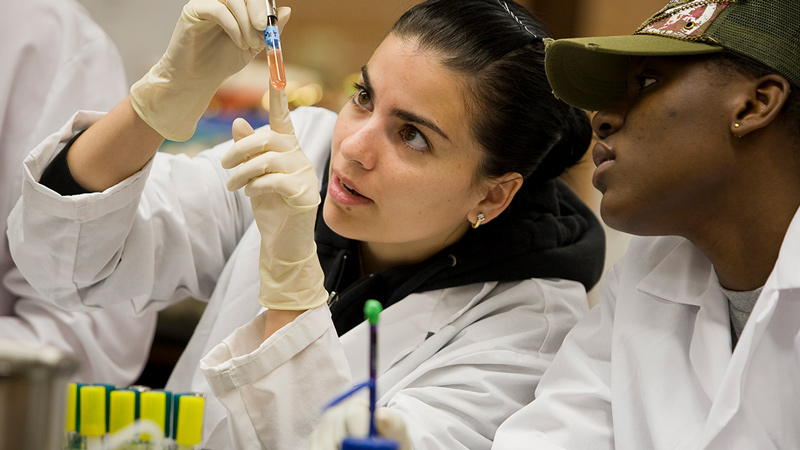Genomics and Informatics
Bioinformatics is the field of science in which biology, computer science, and information technology merge into a single discipline. The Human Genome Project (HGP) has resulted in an explosion of genetic information, which is increasingly guiding new medical discoveries and techniques. New protein structures are solved every day serving as the basis for advanced drug design. Computer database techniques are advancing to address the challenges of analyzing and interpreting huge volumes of biological data. All this has resulted in the relatively young, yet increasingly influential field of bioinformatics with increasing demand for individuals trained in these new ways of thinking and analytical methods.
I have been involved with bioinformatics analyses of candidate genes that affect variety of behavioral traits in honeybees and other organisms. I have also been interested in functional analyses of insect mitochondrial genomes using ERGO bioinformatics suite. In addition, I have been successful in identifying an open-reading frame encoding an NAD-dependent DNA ligase in the draft genome of salt-loving euryarchaeon, Haloferax volcanii using a variety of bioinformatics tools. At present I am looking at understanding the role of PKC family in general and to use the protein kinase family as a model via sequence analysis & evolution in higher organisms. Please refer to my recent publication list for more information.
Genetics
I use genetic approaches to reveal underlying mechanisms of learning behavior in honeybees. My research has focused on applying Quantitative Trait Loci (QTL) mapping to isolate molecular markers that are linked to the genes, which affect phenotypic expression of learning and pollen foraging in bees. My genetic mapping work lead to a successful research finding on an important learning paradigm in honeybees called “Latent Inhibition.” Latent Inhibition is one of the learning mechanisms in which animals learn not to pay attention to stimuli, which are meaningless in nature. Previous research has linked latent inhibition with psychopathological conditions such as acute schizophrenia, Alzheimer, dyslexia, and Parkinson’s disease. I constructed a genomic map of honeybees using Randomly Amplified Polymorphic DNA (RAPD) markers and that led to the identification of chromosomal regions that significantly affected latent inhibition. My current 95% confidence interval for the position of lrn1 (gene for latent inhibition) is about 23 centi Morgan (cM). I am continuing to reduce this confidence interval to 5 cM would represent a distance that could be spanned by several genomic DNA clones and this will certainly facilitate cloning the gene through a map-based cloning procedure. Please refer to my publication list for more information.
Medical Science/Anesthesiology
My collaboration with medical schools abroad has helped me to get involved with a variety of medical research, specifically in the field of drug management and anesthesiology. Endotracheal intubation is one of the most invasive stimuli in anesthesia and it’s often accompanied by a hemodynamic pressor response. We are interested looking at the attenuation of hemodynamic responses to laryngoscope and endotracheal intubation using a number of new and old generations of drugs such as fentanyl, diltiazem, lignocaine, nitroglycerin spray and different combinations of these drugs. At present, we are looking at injection of fentanyl followed by two puffs of nitroglycerin sub lingual spray with a thiopentone/suxamethonium sequence in the attenuation of the hemodynamic response to endotracheal intubation in normotensive patients. We are also involved in understanding hemodynamic response to spinal anesthesia for lower abdominal surgeries by the combination of Clonidine and Bupivacaine.
Please refer to my recent publication list for more information.




















